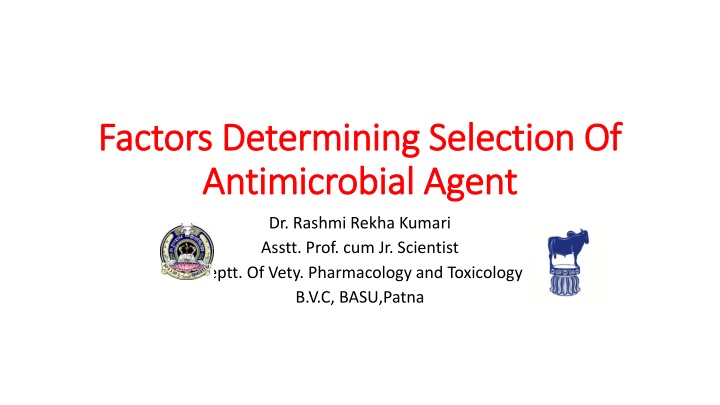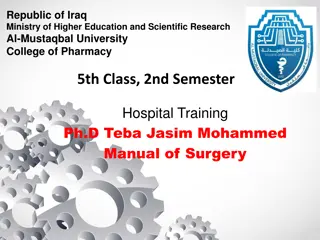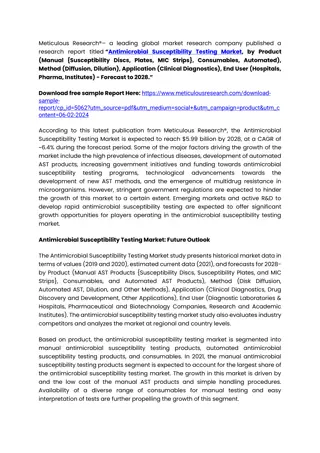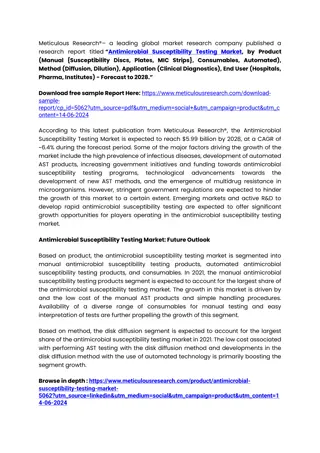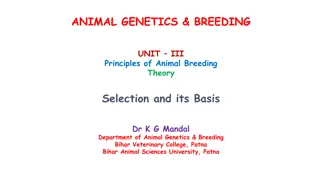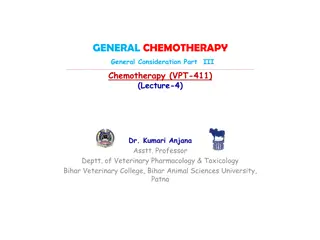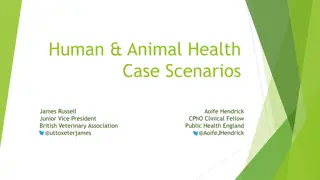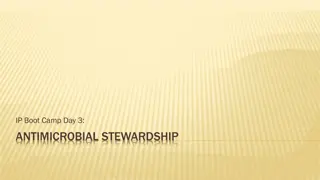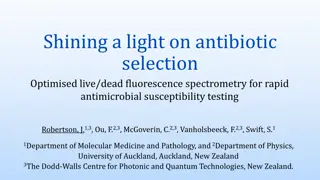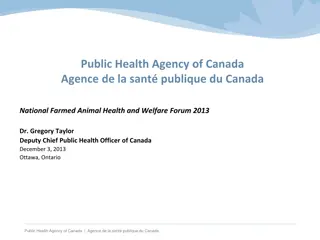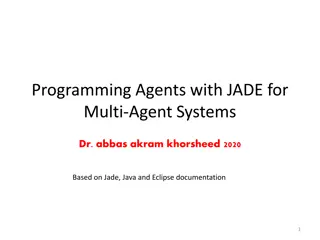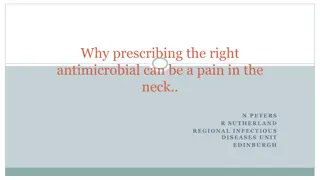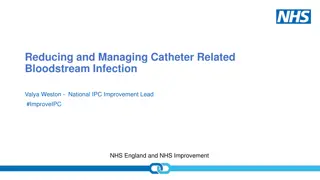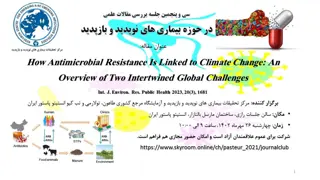Factors Influencing Antimicrobial Agent Selection
Selection of an appropriate antimicrobial agent is crucial and depends on factors like spectrum of activity, type of activity, sensitivity of the organism, relative toxicity, and pharmacokinetic profile. Understanding these factors helps in choosing the most effective treatment for infections.
Download Presentation

Please find below an Image/Link to download the presentation.
The content on the website is provided AS IS for your information and personal use only. It may not be sold, licensed, or shared on other websites without obtaining consent from the author.If you encounter any issues during the download, it is possible that the publisher has removed the file from their server.
You are allowed to download the files provided on this website for personal or commercial use, subject to the condition that they are used lawfully. All files are the property of their respective owners.
The content on the website is provided AS IS for your information and personal use only. It may not be sold, licensed, or shared on other websites without obtaining consent from the author.
E N D
Presentation Transcript
Factors Determining Selection Of Factors Determining Selection Of Antimicrobial Agent Antimicrobial Agent Dr. Rashmi Rekha Kumari Asstt. Prof. cum Jr. Scientist Deptt. Of Vety. Pharmacology and Toxicology B.V.C, BASU,Patna
Slelection of Antimicrobial agent is determined by following factors
Spectrum of activity: For definitive therapy a narrow spectrum drug is preferred over broad spectrum(advantage ?) For empirical therapy, broad spectrum is preferred to cover all likely pathogens Type of activity: Patient with normal host defence: either bacteriostatic or bacteriocidal drug may be used Severe acute infection: Resolve faster with cidal AMA (why?) Impaired host defence: Bactericidal AMA(why?)
Sensitivity of organism: Accessed on the basis MIC value and consideration of their post antibiotic effect Relative Toxicity: Less Toxic antibiotic should be preferred, e.g. a -lactam over an aminoglycosides or erythromycin over clindamycin
Post antibiotic effect Post antibiotic effect After a brief exposure if the organism is antibiotic free medium, it starts multiplying again, but after a lag period which depends on the antibiotic as well as the organism. This lag period in growth resumption is called Post Anibiotic effect. placed in Long PAE is noted with fluoroquinolones Aminoglycosides and
Pharmacokinetic Profile: Most antibiotic are given at 2-4 half life intervals thus attaining therapeutic concentrations only intermittently. For many organism, aminoglycosides and fluoroquinolones produce concentration dependent inhibition inhibitory effect depends on the ratio of peak concentration to MIC. The same daily dose of Gentamicin produces better action when given as a single dose than if it is divided into 2-3 portion. While Some other antibiotic produce Time dependent action
Time dependent inhibition: Antimicrobial action depends on the length of time the concentration remains above MIC; division of daily dose have better effect lactam antibiotic,glycopeptides, and macrolid produce time dependent inhibition The fluoroquinolones have excellent tissue penetration attain high concentration in soft tissue, lungs, prostrate joints, etc Ciprofloxacin and rifampin have very good intracellular penetration. Cefuroxime, ceftriaxone, chloramphenicol, ciprofloxacin attain high CSF concentration.
Route of administration: Aminoglycosides, Penicillin G, carbenicillin and many cephalosporins, Vancomycin, etc have to be given by injection only. For less severe infection: oral formulations are preferred For Severe infection(meningitis, septicaemia) : Intravenous formulations Cost: Less expensive drugs are to be preferred.
Genetic/metabolic variation: Peripheral neuropathy: Slow vs. Fast acetylators (isoniazid) Hemolysis: Glucose-6-phosphate dehydrogenase Sulfonamides, nitrofurantoin, nalidixic acid, antimalarials, dapsone, and chloramphenicol
